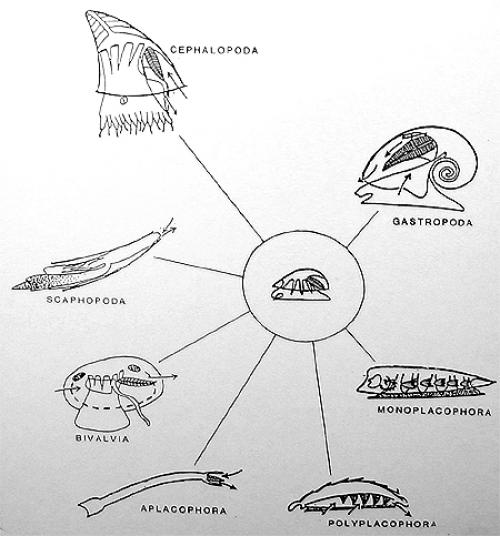Molluscs
The Mollusca (pronounced /məˈlʌskə/), common name molluscs or mollusks[note 1] (pronounced /ˈmɒləsks/), is a large phylum of invertebrate animals. There are around 85,000 recognized extant species of molluscs. Mollusca is the largest marine phylum, comprising about 23% of all the named marine organisms. Numerous molluscs also live in freshwater and terrestrial habitats. Molluscs are highly diverse, not only in size and in anatomical structure, but also in behaviour and in habitat. The phylum is typically divided into nine or ten taxonomic classes, of which two are entirely extinct. Cephalopod molluscs such as squid, cuttlefish and octopus are among the most neurologically advanced of all invertebrates – and either the giant squid or the colossal squid is the largest known invertebrate species. The gastropods (snails and slugs) are by far the most numerous molluscs in terms of classified species, and account for 80% of the total. Molluscs have such a varied range of body structures that it is difficult to find defining characteristics that apply to all modern groups. The two most universal features are a mantle with a significant cavity used for breathing and excretion, and the structure of the nervous system. As a result of this wide diversity, many textbooks base their descriptions on a hypothetical "generalized mollusc". This has a single, "limpet-like" shell on top, which is made of proteins and chitin reinforced with calcium carbonate, and is secreted by a mantle that covers the whole upper surface. The underside of the animal consists of a single muscular "foot". Although molluscs are coelomates, the coelom is very small, and the main body cavity is a hemocoel through which blood circulates – molluscs' circulatory systems are mainly open. The "generalized" mollusc's feeding system consists of a rasping "tongue" called a radula and a complex digestive system in which exuded mucus and microscopic, muscle-powered "hairs" called cilia play various important roles. The "generalized mollusc" has two paired nerve cords, or three in bivalves. The brain, in species that have one, encircles the esophagus. Most molluscs have eyes, and all have sensors that detect chemicals, vibrations and touch. The simplest type of molluscan reproductive system relies on external fertilization, but there are more complex variations. All produce eggs, from which may emerge trochophore larvae, more complex veliger larvae, or miniature adults.
Source: http://en.wikipedia.org/wiki/Mollusca | ||
Virtual museum of the Czech Geological Survey, www.geology.cz, (C) Czech Geological Survey, 2011, v.0.99 [13.12.2011]


![[ENG]](img/vlajka-cr.gif) Česky
Česky 
